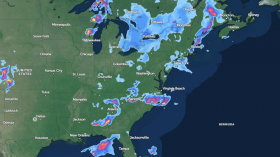It is expected that the distribution of venomous snake species will be significantly impacted by climate change, with changes in patterns of envenomation of domestic animals and humans as well as declines in biodiversity.
New Home For Dangerous Snakes
As climate change intensifies, certain people in Asia, Sub-Saharan Africa, Australia, and Florida may have to worry about an invasion of dangerous snakes in their area in addition to heat waves and rising sea levels.
According to a recent study, some venomous snakes, like the European asp and the west African gaboon viper, may find new homes in Asia and Sub-Saharan Africa as a result of rising temperatures.
According to the researchers, when the climate warms, the most dangerous snake species from neighboring countries will move to China, Myanmar, Niger, Namibia, Nepal, and Niger.
The goal of the study was to determine where different snake species would find favorable climatic circumstances by 2070 by modeling the geographic distribution of 209 venomous snake species that are known to cause medical issues in humans.
The loss of tropical and subtropical ecosystems would cause the ranges of most poisonous snake species to shrink, but some species, like the west African gaboon viper, will see an expansion in habitat that could reach 250%.
By 2070, it was predicted that the ranges of the horned viper and the European asp would have more than doubled.
Nonetheless, it was predicted that some snakes will lose more than 70% of their territory, such as the hognosed pit viper of the Americas and the variable bush viper that is native to Africa.
"As more land is converted for agriculture and livestock rearing, it destroys and fragments the natural habitats that snakes rely on," said study authors Pablo Ariel Martinez at the Federal University of Sergipe in Brazil and Talita Amado at the German Centre for Integrative Biodiversity Research in Leipzig, Germany.
Read Also: Deadly Sea Snake Sightings Increase Along New South Wales Coast
Snake Bites
The World Health Organization has been keeping tabs on this trend as well.
According to estimates from the organization, between 1.8 and 2.7 million people are bitten by venomous snakes each year, resulting in at least 400,000 amputations, permanent impairments, and up to 138,000 fatalities. In 2017, the WHO designated snakebite envenomation as a neglected tropical illness with utmost concern.
In January, they issued a "call for urgent action," urging nations to begin storing antivenom and training those who may come into contact with the deadly reptiles in anticipation of a spike in snakebites.
"We are now finally getting a better handle on how snakes will change their distributions with climate change, but there is also a major concern that they will bite more people if warm temperatures, severe wet weather events, and flooding that displaces snakes and people get more frequent," said Anna Pintor, a research scientist with the WHO's neglected tropical diseases group.
Although not included in this study, scientists have already observed a rise in snake activity in Australia as shorter winters encourage snakes to emerge from their brumation, or time of relative hibernation, earlier each year. This has increased revenue for the nation's snake catchers.
Florida is being gradually invaded by Burmese pythons, which were first brought by humans in the 1980s, most likely by people who kept them as pets, according to scientists.
The US Geological Society predicts that they may be moving even further north due to climate change. According to a new study, since pythons burp with substantially less gas than cows, they may actually replace other proteins as a more accessible and environmentally friendly option.
Related Article: 240 Million Years Old Snake Ancestor Skeleton Discovered That Could Help Unlock Evolution Mysteries
© 2024 NatureWorldNews.com All rights reserved. Do not reproduce without permission.






